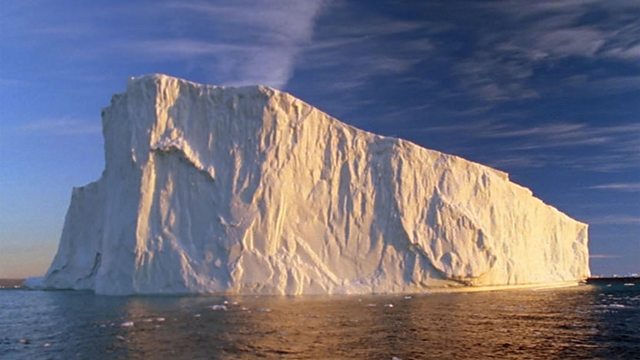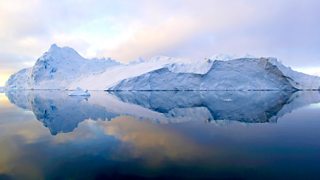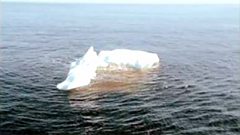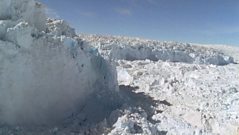
The Titanic iceberg is steered into the shipping lanes
Once they have reached the open ocean, icebergs are pushed around by deep ocean currents. It was intially steered north towards the arctic before turning toward its meeting with the world's most famous ship.
Once they have reached the open ocean, icebergs are pushed around by deep ocean currents. In 1911 the Titanic iceberg would have been picked up on the powerful west Greenland current.
Instead of drifting towards the shipping lanes and the fatal collision site, it was steered in entirely the opposite direction - north, toward the arctic. In these early stages of its journey it would have seemed no threat to anyone.
At the polar ice cap the West Greenland current curls, and turns south. It dragged the Titanic iceberg with it down the north-eastern coast of Canada. Even now, the Titanic iceberg would have been huge. The above water ice alone would have rivalled the Colosseum in size. Eight weeks before its meeting with the world's most famous ship it was moving south at a rate of twelve miles per day.
The iceberg's route south was far from plain sailing. A ragged, rocky shelf fingering out from the Newfoundland coast snares many passing icebergs, which end up melting along this coastline. The Titanic iceberg could easily have met a similar fate, but the deep Labrador current pulled it wide of the coast and continued to control its journey south.
By now the warming temperatures were taking their toll. The ancient snowflakes at its centre were still at minus 20 degrees centigrade, but its surface was being eaten away by sun and sea and this would change its behaviour radically.
Duration:
This clip is from
Featured in...
![]()
The Iceberg That Sank the Titanic
Exploring the origins of the iceberg that caused the sinking of the Titanic.
More clips from The Iceberg That Sank the Titanic
-
![]()
What happened to the iceberg which sank the Titanic?
Duration: 01:30
-
![]()
The Titanic iceberg reaches the open ocean
Duration: 03:01
-
![]()
The Titanic iceberg starts life as a snowflake
Duration: 02:56
-
![]()
Origins of the Titanic iceberg
Duration: 02:46
More clips from Natural World
-
![]()
Robo Hare Vs Golden Eagle—2019-2020, Super Powered Eagles
Duration: 02:41
-
![]()
Super Powered Eagles—2019-2020, Super Powered Eagles
Duration: 01:15
-
![]()
Meet Tilly the golden eagle—2019-2020, Super Powered Eagles
Duration: 02:01










